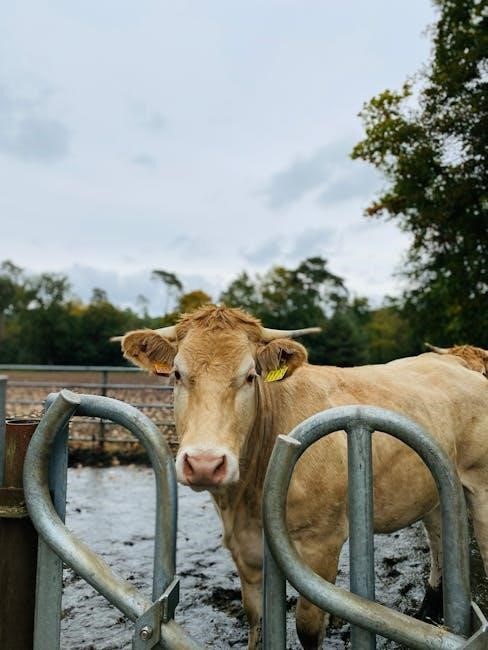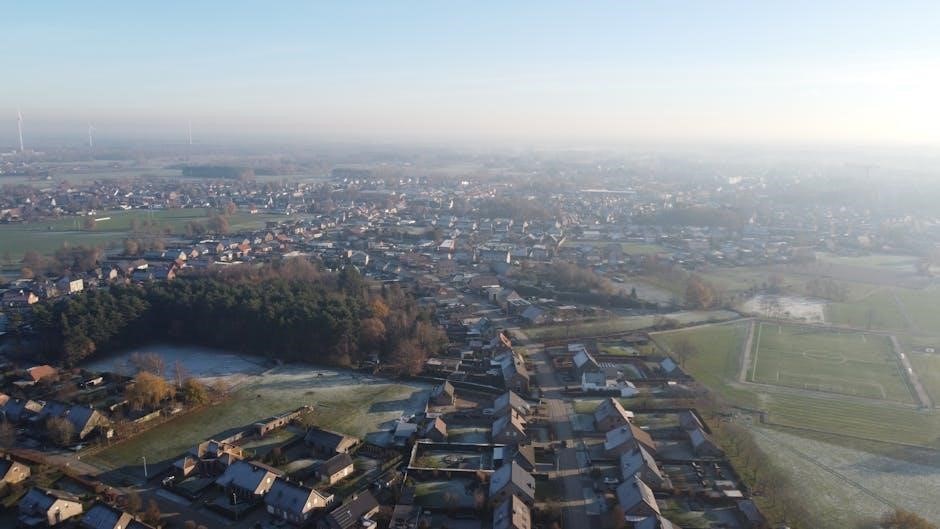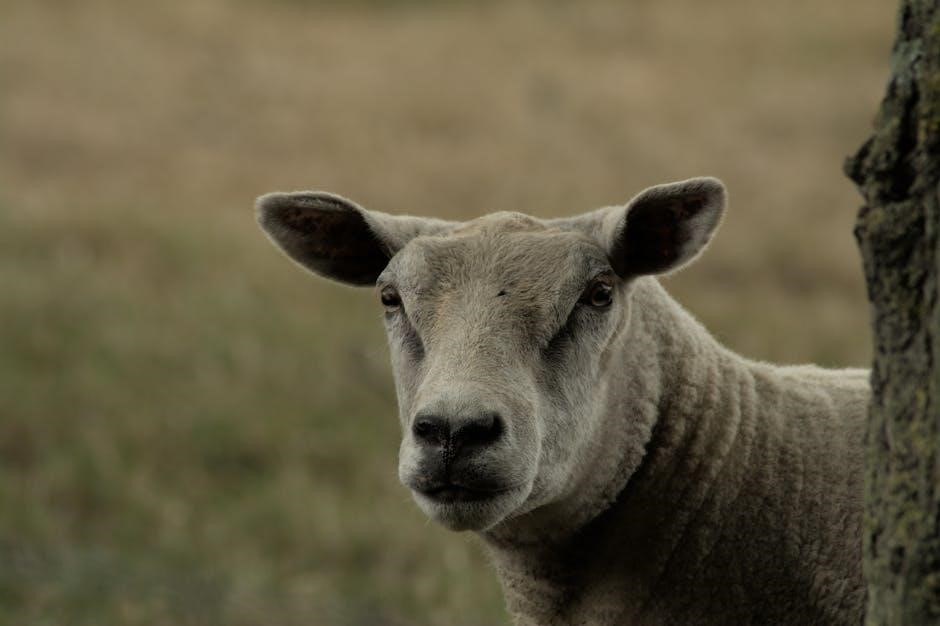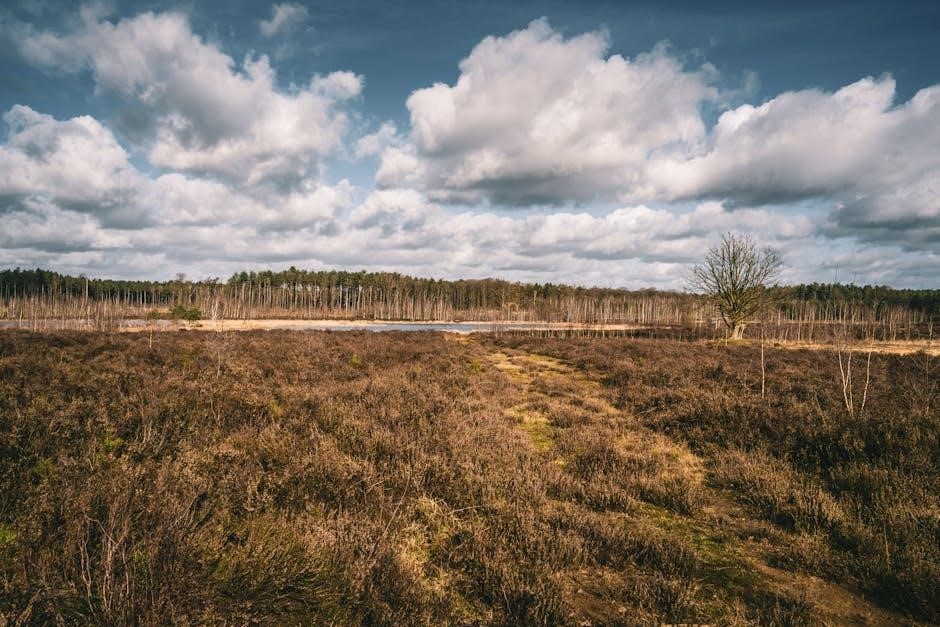“In Flanders Fields,” by John McCrae, is a poignant WWI poem honoring fallen soldiers. Its vivid imagery of poppies and crosses has made it a timeless tribute, widely read and admired today.
1.1 Overview of the Poem
In Flanders Fields is a powerful war poem that vividly depicts the graves of soldiers in Flanders during World War I. The poem uses the imagery of poppies growing among crosses to symbolize the lives lost in battle. It conveys the voices of the dead, urging the living to remember their sacrifice. The larks singing in the sky add a sense of resilience and hope amidst tragedy, emphasizing the enduring message of remembrance and honor.
1.2 Historical Context of the Poem
In Flanders Fields was composed on May 3, 1915, during the Second Battle of Ypres in Belgium. The poem reflects the devastation of World War I, where Flanders became a battleground with countless graves marked by crosses. The red poppies growing among these graves symbolized the bloodshed and sacrifices of soldiers. McCrae wrote it after witnessing the death of a friend and the horrors of war, capturing the sorrow and resilience of the time.
The Author: John McCrae
John McCrae was a Canadian physician, soldier, and poet who served in World War I. His poem reflects his deep emotional response to the war’s tragedies.
2.1 Biography of John McCrae
John McCrae was a Canadian physician, soldier, and poet, born on November 30, 1872, in Guelph, Ontario. He studied medicine at the University of Toronto and served in the Boer War. During World War I, he joined the Canadian Expeditionary Force and became a lieutenant-colonel. McCrae’s experiences as a battlefield surgeon deeply influenced his writing. He died on January 28, 1918, from pneumonia while serving in France.
2.2 McCrae’s Role in World War I
During World War I, John McCrae served as a lieutenant-colonel in the Canadian Expeditionary Force. He was a surgeon in the 1st Brigade, Canadian Field Artillery, and witnessed the horrors of war firsthand. His experiences during the Second Battle of Ypres inspired “In Flanders Fields,” a poem that became a powerful symbol of remembrance for fallen soldiers and the poppy’s enduring significance.

The Composition of the Poem
“In Flanders Fields” was composed by John McCrae on May 3, 1915, during the Second Battle of Ypres. Its creation was deeply influenced by the tragic loss of a close friend and the haunting landscape of war-torn Flanders, leading to a powerful expression of grief and enduring remembrance.
3.1 Date and Place of Composition
“In Flanders Fields” was composed by John McCrae on May 3, 1915, during the Second Battle of Ypres in Belgium. The poem was written in the trenches, inspired by the graves of fallen soldiers and the poppies blooming amidst the devastation. The vivid imagery of the battlefield and the emotional weight of loss shaped its creation. It was later published in Punch magazine on December 8, 1915.
3.2 Inspiration Behind the Poem
John McCrae was inspired to write “In Flanders Fields” after witnessing the death of his friend, Alexis Helmer, during the Second Battle of Ypres. The vivid image of poppies blooming among the graves of fallen soldiers deeply moved him. The poem reflects the horrors of war, the sacrifice of soldiers, and the enduring symbols of remembrance. McCrae’s experience as a surgeon and soldier further fueled his emotional response to the battlefield’s devastation.
The Structure of the Poem
“In Flanders Fields” follows the rondeau form, a French poetic structure with a refrain. Its 13 lines evoke emotional depth, reinforcing themes of remembrance and loss.
4.1 The Rondeau Form
“In Flanders Fields” is crafted in the rondeau form, a poetic structure originating from France. It features a repeating refrain and a specific 13-line format. The poem’s first line recurs in the third and final stanzas, emphasizing remembrance. This structure, with its musical rhythm, enhances the emotional weight of the poem’s themes of loss and honor. McCrae’s use of this form adds depth and resonance to the narrative.
4.2 Key Imagery and Symbolism
The poem’s imagery centers on poppies, crosses, and larks, each carrying profound symbolism. Poppies symbolize remembrance and the souls of the fallen, while crosses mark the graves of soldiers. Larks singing amidst death represent enduring hope. The vivid red of poppies evokes memories of lives lost, creating a lasting emotional connection; These elements weave together to honor sacrifice and memory.
The Publication and Reception
In Flanders Fields was first published in Punch magazine on December 8, 1915. Its emotional resonance quickly made it a celebrated and enduring symbol of wartime sacrifice.
5.1 First Publication in Punch Magazine
In Flanders Fields was first published in Punch magazine on December 8, 1915. The poem’s emotional depth and vivid imagery resonated deeply, quickly making it a symbol of wartime sacrifice. Its publication in such a prominent British weekly helped spread its message globally, cementing its place in the cultural landscape of World War I remembrance.
5.2 Impact and Popularity of the Poem
In Flanders Fields became an instant masterpiece, resonating deeply with readers worldwide. Its vivid imagery of poppies and crosses transformed the flower into a symbol of remembrance. The poem’s emotional appeal inspired countless memorials and tributes, solidifying its place in cultural heritage. Its popularity endures, making it a cornerstone of WWI literature and a poignant reminder of sacrifice and honor.
Themes and Messages
The poem conveys the cost of war and the importance of remembrance, urging future generations to honor the sacrifices of fallen soldiers and cherish peace deeply.
6.1 The Cost of War
The poem vividly portrays the devastating cost of war through its imagery of poppies blooming among graves and the voices of the fallen. It highlights the loss of young lives, the futility of conflict, and the enduring grief of those left behind. The larks singing in the sky symbolize life’s continuity, contrasting sharply with the death below, emphasizing war’s tragic sacrifice and lasting emotional toll.
6.2 The Call to Remember and Honor
The poem serves as a powerful call to remember and honor the sacrifices of fallen soldiers. It urges the living to take up the torch of remembrance, ensuring their legacy endures. The poppy, a central symbol, represents the bloodshed and resilience of those who died. McCrae’s words emphasize the importance of honoring their memory and upholding the principles they fought for, balancing grief with resolve and duty.

The Legacy of “In Flanders Fields”
The poem’s enduring legacy lies in its timeless message of remembrance and sacrifice. It has become a cultural touchstone, symbolizing the cost of war and honoring the fallen, ensuring their memory lives on through generations.
7.1 The Poppy as a Symbol of Remembrance
The poppy, inspired by McCrae’s poem, has become an international symbol of remembrance for fallen soldiers. Its imagery in In Flanders Fields transformed it into a powerful emblem, adopted by organizations like the Royal British Legion. Today, the poppy is worn during tributes and fundraisers, honoring wartime sacrifices and supporting veterans, ensuring the legacy of remembrance endures for future generations.
7.2 Cultural and Historical Significance
“In Flanders Fields” holds profound cultural and historical importance as a defining piece of World War I literature. It captures the tragedy of war, honor of sacrifice, and the enduring spirit of remembrance. The poem’s themes transcend time, resonating globally and shaping collective memory. Its influence extends beyond literature, embedding itself in memorials, education, and public consciousness, ensuring the sacrifices of wartime are never forgotten.
The Poem’s Place in Education
“In Flanders Fields” is widely taught in schools, enhancing understanding of WWI history and literature. Its themes and imagery make it a valuable educational resource for students globally.
8.1 Teaching the Poem in Schools
“In Flanders Fields” is frequently included in school curricula to teach students about World War I and its impact. Educators use the poem to explore themes of sacrifice, remembrance, and patriotism. Its vivid imagery and emotional depth make it an effective tool for teaching historical context, literary analysis, and critical thinking. Schools often provide study guides and analysis resources to enhance student understanding and engagement with the poem.
8.2 Study Guides and Analysis Resources
Study guides and analysis resources for “In Flanders Fields” are widely available online, offering insights into its historical context, literary devices, and themes. These resources often include discussion questions, essay topics, and downloadable PDF versions of the poem. They are designed to help students and educators delve deeper into the poem’s meaning, exploring its symbolism and emotional impact. Many guides also provide historical background on World War I, enhancing understanding of the poem’s significance.

Digital Availability and Accessibility
“In Flanders Fields” is widely available in PDF format online, accessible through educational and cultural websites. It can also be downloaded as part of e-books or study guides, ensuring easy access for readers worldwide.
9.1 PDF Versions of the Poem
“In Flanders Fields” is readily available in PDF format, accessible through various educational and cultural websites. These digital versions often include the full text of the poem, alongside historical context and analysis. Many websites offer free downloads, making it easy for readers to access and share the poem. Additionally, PDF versions are frequently included in e-books and study guides focused on World War I literature.
9.2 Online Resources and Downloads
Various online platforms offer “In Flanders Fields” as downloadable content, including e-books, study guides, and educational resources. Websites like Google Books and educational forums provide easy access to the poem in multiple formats. These resources are ideal for students, educators, and history enthusiasts, allowing for deeper exploration of the poem’s themes and historical significance. Downloads often include accompanying analysis and context.
Commemoration and Memorials
The poem inspired the poppy as a symbol of remembrance, with memorials worldwide honoring fallen soldiers. It continues to be a cornerstone of wartime commemorations and tributes.
10.1 The Poppy Appeal
The poppy, inspired by McCrae’s poem, became a global symbol of remembrance for fallen soldiers. The Poppy Appeal, led by veterans’ organizations, distributes poppy pins annually, with proceeds supporting veterans and their families. This tradition, rooted in the poem’s imagery, ensures the legacy of “In Flanders Fields” endures, honoring wartime sacrifices and fostering collective remembrance across nations.
10.2 Memorial Services and Events
Memorial services worldwide often feature readings of “In Flanders Fields” to honor war victims. Ceremonies at Ypres and the Menin Gate in Belgium include the poem, linking attendees to the soldiers’ sacrifices. These events, held annually, emphasize remembrance and peace, ensuring the poem’s message resonates across generations, fostering unity and reflection on wartime losses.

The Poem’s Enduring Relevance
The poem remains a powerful tribute to wartime sacrifices, evoking reflection on loss and remembrance. Its imagery of poppies and larks continues to resonate emotionally across generations.
11.1 Contemporary Resonance
The poem’s vivid imagery of poppies and crosses continues to evoke strong emotions, symbolizing remembrance and sacrifice. Its themes of loss and honor resonate globally, transcending time. The red poppy remains a powerful symbol of wartime sacrifices, inspiring reflection on patriotism and peace. Its relevance endures, connecting past struggles to contemporary values, ensuring its message remains poignant in modern society and education.
11.2 Adaptations and Interpretations
The poem has been adapted into various forms, including musical compositions and translations, preserving its emotional depth. Its imagery, like the red poppy, symbolizes remembrance globally. Interpretations often focus on its themes of sacrifice and patriotism, resonating across cultures. Educational resources and artistic renditions further amplify its message, ensuring its relevance in modern discussions about war and peace.
“In Flanders Fields” remains a powerful symbol of remembrance, honoring wartime sacrifices. Its enduring relevance ensures continued resonance, inviting readers to reflect on its profound message and historical significance.
12.1 Final Thoughts on the Poem’s Significance
The poem’s profound impact lies in its ability to transcend time, evoking emotions and fostering remembrance. It captures the essence of sacrifice and honor, resonating globally. As a cultural icon, it continues to inspire reflection on war’s cost and the importance of remembering the fallen. Its legacy endures, ensuring its timeless relevance in a changing world.
12.2 Encouragement to Read and Reflect
Reading “In Flanders Fields” offers a profound opportunity to connect with history and honor the fallen. Its accessible language and enduring themes make it a valuable read for all ages. Reflecting on its message encourages empathy, gratitude, and a deeper understanding of sacrifice. Downloading the poem as a PDF provides an easy way to share and revisit its powerful words, ensuring its legacy continues to inspire future generations.
